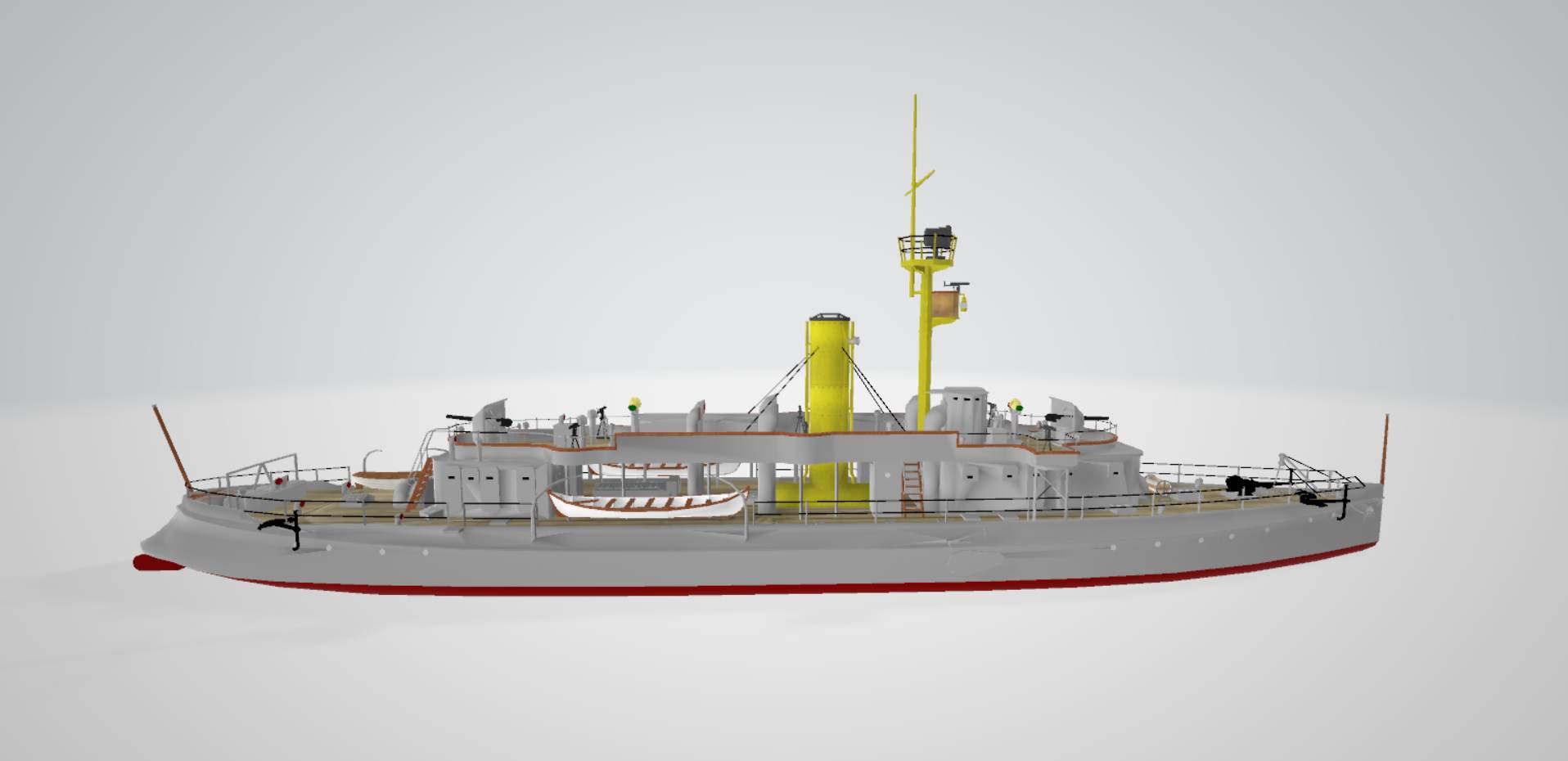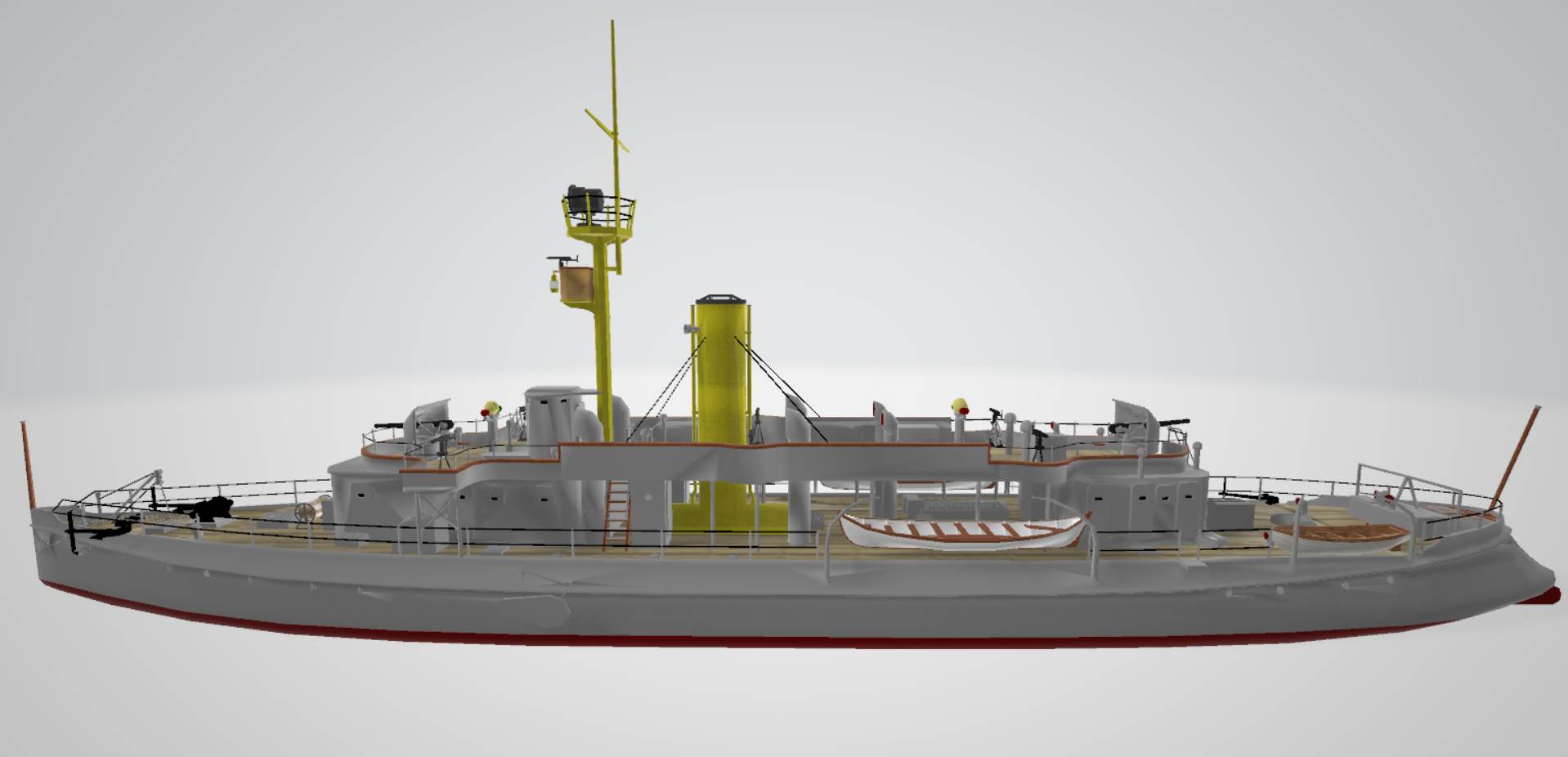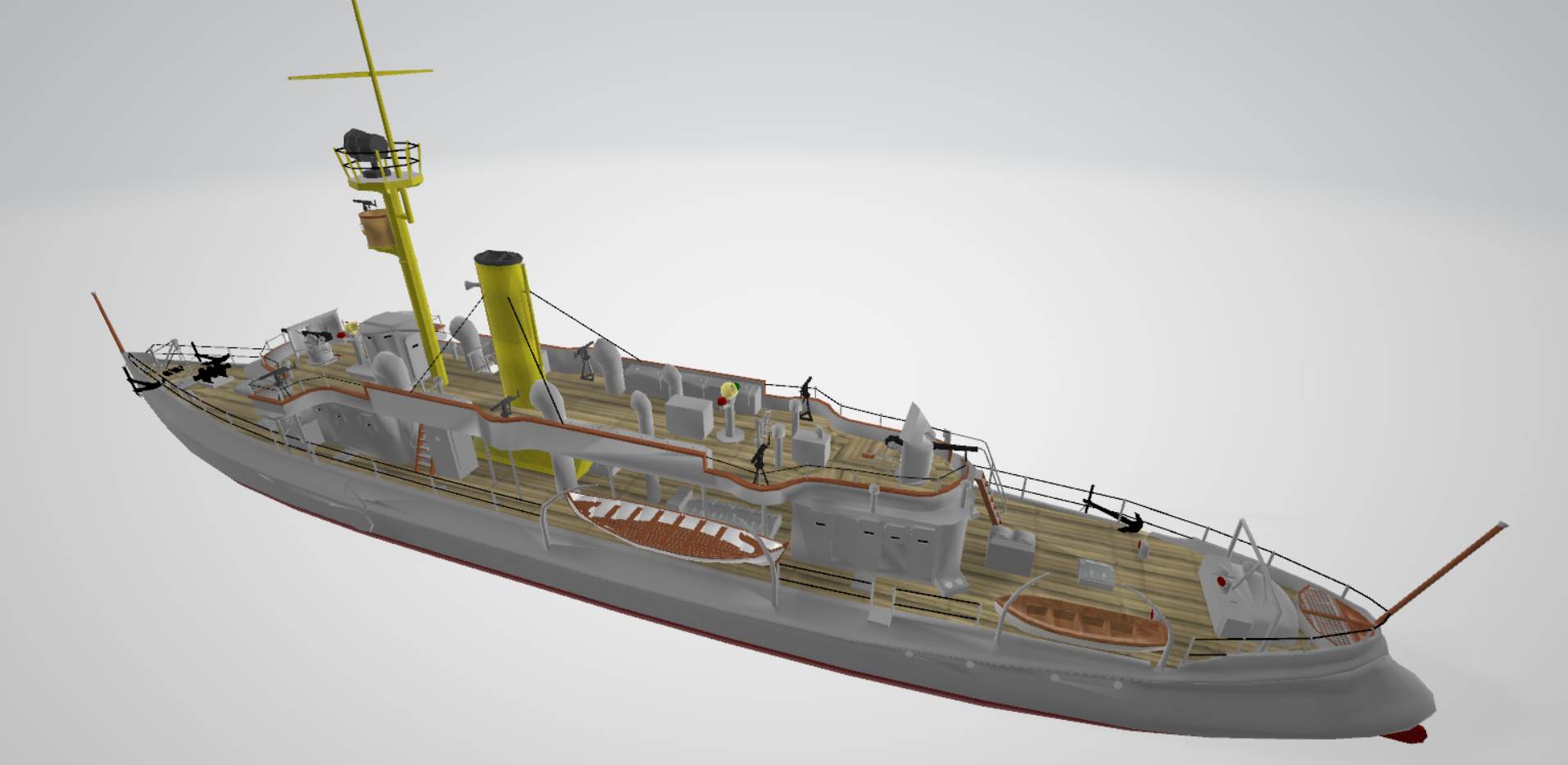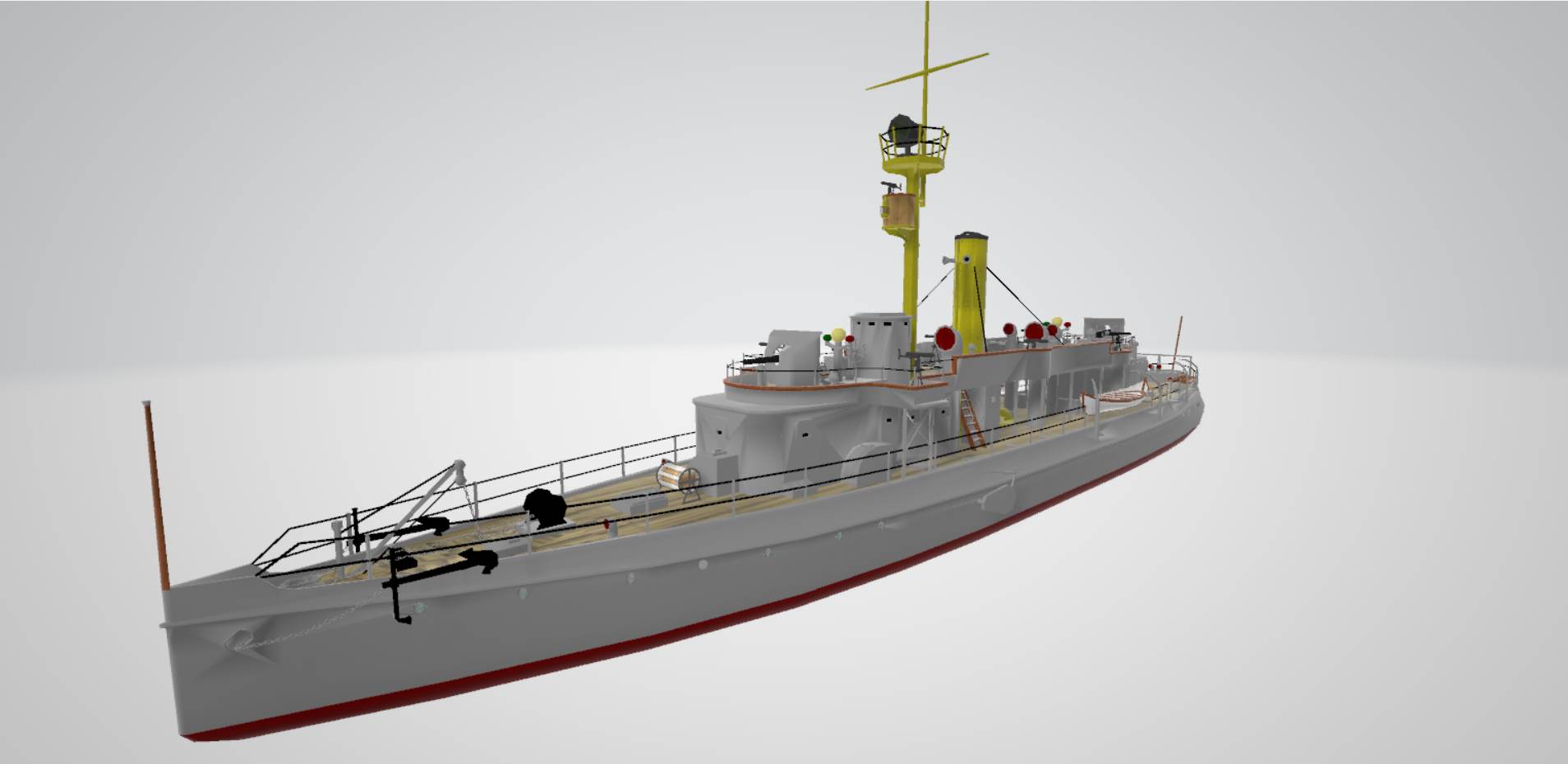

SMS TSINGTAU 1903
ONLY £ 25 EACH FOR ALL MODELS (Including for commercial use) !
VIEW OR BUY AND DOWNLOAD THIS PRODUCTCLICK ON A PICTURE BELOW FOR LARGER IMAGE
 |
 |
 |
 |
SMS
Tsingtau
SMS Tsingtau was a river gunboat of the Imperial Navy. The boat was used in China from 1904 to 1914.
Two river cannon boats were ordered from the F. Schichau shipyard in Elbing
in 1902.
Construction of the first boat began in the summer of 1902.
On April 18, 1903, it was ready to be launched and was named Tsingtau, after the capital of the German leased area Kiautschou.
On May 15th the boat was handed over to the Imperial Navy. In the following period, test were carried out without an official commissioning.
After its completion, the Tsingtau was dismantled by the shipyard in September and shipped to Hong Kong on the steamer Prinzess Marie .
There it was reassembled at a private shipyard. This procedure was made possible by the pontoon construction of the boat, which consists of nine parts.
The Tsingtau was put into service on February 3, 1904 and assigned to the
East Asia Squadron.
The area of operation of the boat included the Pearl River and the West River as well as the estuary around Hong Kong and Macau.
The main tasks of the Tsingtau were the representation of the German Empire,
the safeguarding of German citizens and economic interests as well as the
fight against piracy.
For this purpose, the boat made several trips on the Pearl River and its tributaries and visited among others the cities of Wuzhou , Nanning , Shiuchow and Longtschou.
Navigating the streams was a challenge for the boat and its crew due to the fluctuating water levels and the existing rapids.
In addition to the usual river trips, the crew helped put out a fire in
Macau in June 1906.
August to September of the same year, Tsingtau, together with British and French warships, took action against piracy in the area of the mouths of the West and East Rivers.
In January 1911, she transfered the body of the squadron chief, Rear Admiral Erich Gühler, who died in Hong Kong, to the steamer Bülow of the North German Lloyd.
Due to the outbreak of the Xinhai Revolution, the Tsingtau had a brief watch
for the German consulate from October 30, 1911 in Canton to protect it from
attacks.
On July 30, 1914, the Tsingtau , which was currently on the West River at that time, received the order to return to Canton.
The background to this was the political tensions in Europe in connection with the July crisis .
The boat reached Canton on August 1st and was taken out of service there on the following day, in accordance with the plans for mobilization.
The commander of the Tsingtau, Kapitänleutnant Erwin von Möller,
went with part of the crew to Manila to set up a stage for the East Asia
squadron.
When trying to reach SMS Emden with the coal steamer Hoerde, the men were interned by the Netherlands.
However, they managed to escape with the schooner Marboek, which was renamed Weddigen.
After 82 days the troop reached the Arab coast at the beginning of March
1915 and set out on foot in the direction of the Turkish coast Positions.
On March 29, von Möller and his men were attacked and killed by Arabs north of Jeddah.
Most of the crew that had initially remained in Canton went to Tsingtau
by land.
There they were assigned to the auxiliary cruiser SMS Cormoran.
They were interned in Guam at the end of 1914 and after the entry of the United States into the war they became prisoners of war.
Only a small remaining crew remained on board the Tsingtau. Until March
21, 1917 the boat was in front of Canton.
On that day, China entered World War I on the side of the Allies. The Tsingtau was then sunk by its crew in order to remove it from the new enemy.
Lifting attempts made later were unsuccessful.
VIEW OR BUY AND DOWNLOAD THIS PRODUCT
BACK TO INDEX
(c) Copyright .................Virtual Dockyard.....................2021